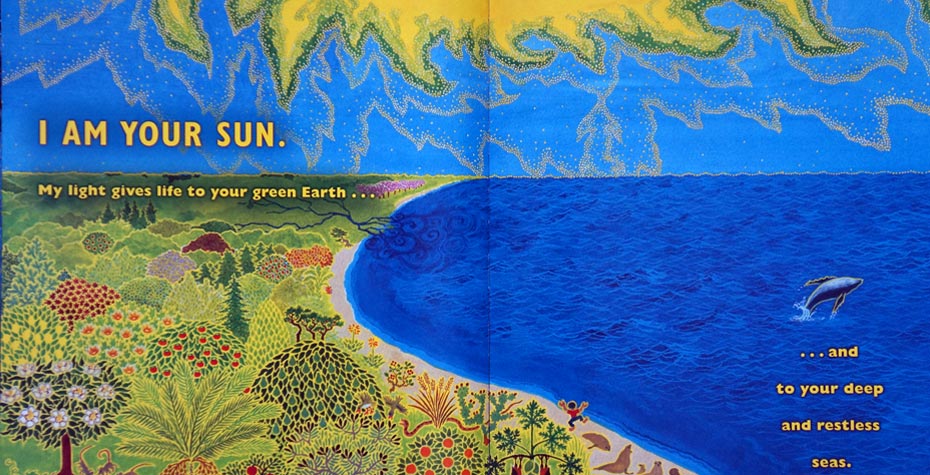Molly Bang ’65 Wins 2013 Best Children's Science Picture Book

The American Association for the Advancement of Science (AAAS) named Ocean Sunlight: How Tiny Plants Feed the Seas (Blue Sky Press, 2012) by Molly Bang ’65 and MIT's Professor of Biology Penny Chisolm, the Best Children’s Science Picture Book of 2012 in its AAAS/Subaru Science Books & Films Prize for Excellence in Science Books.
Bang and Chisholm also won in the Children’s Picture Book category in 2009 for their previous collaboration, Living Sunlight: How Plants Bring the Earth to Life.
According to the association, the prize (in four categories) celebrates outstanding science writing and illustration for children and young adults. The prizes recognize recently published works that are scientifically sound and foster an understanding and appreciation of science in young readers.
AAAS wrote in its citation:
Acclaimed Caldecott artist Molly Bang paints a stunning, sweeping view of our ever-changing oceans. In this timely book, Bang uses her signature poetic language and dazzling illustrations to introduce the oceanic world. From tiny aquatic plants to the biggest whale or fish, Bang and Chisholm present a moving, living picture of the miraculous balance sustaining each life cycle and food chain deep within the oceans. “I am your sun...All ocean life depends on me; so does all life on land.” Thus begins the clear explanation of the role of the sun in photosynthesis on land and seas as the ocean’s role in the food chain is introduced. Subsequently the reader is introduced to “the great invisible pasture of the sea,” phytoplankton. Bang uses somewhat complex page designs to deliver considerable information about the way the ocean works, continuously creating a strong sequence of aesthetic images. She often uses multiple frames to isolate specific interactions, while retaining an overall sense of unity. There are extensive additional notes to aid understanding.
The book has also been given a Riverby Award for excellent natural history books for young readers by the John Burroughs Association this year.
Bang, the daughter of scientific-minded parents, was a French major at Wellesley, and her own account of her path to becoming a children's book author and illustrator reflects a classic Wellesley cross-disciplinary and exploratory approach, where pragmatism and idealism go hand in hand. It also reflects her own self-deprecating humor:
I went to college at Wellesley and majored in French. After college graduation in 1965, I went to Kyoto, Japan, where I taught English and learned enough Japanese to know that I wanted to explore it much more. After a year and a half, I returned to the U.S. but while waiting to be accepted into a graduate program in Far Eastern studies, I got a job as an interpreter for the (Japanese) Asahi newspaper. This happened just at the time of the first Apollo flights. Through the job, I was able to work and become friends with some of the best Japanese newspaper reporters, travel to parts of the United States that I'd never seen before, and learn something about one of the greatest of human endeavors. I walked inside the vast buildings that housed the rockets and saw them from all angles, got a sense of the developing science of "systems analysis," and sat in the press box as the rocket of the first landing mission shook the ground beneath us as it lifted off for the moon.
I studied Far Eastern Languages and Literatures, first at the University of Arizona and then at Harvard. I received masters' degrees from both and learned how unsuited I was for scholarly research and a life spent in libraries. I then worked at the Baltimore Sun, where I learned how unsuited I was as a reporter by getting fired. At this low point, two close friends convinced me that I should do what I had always wanted to do: illustrate children's books.
We (and countless young readers) are glad she did!
